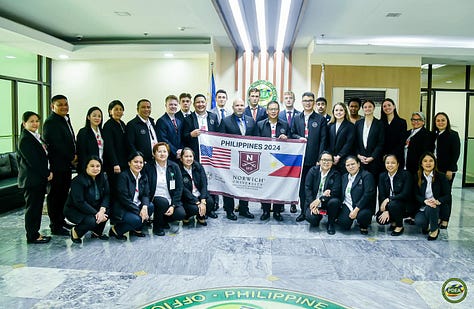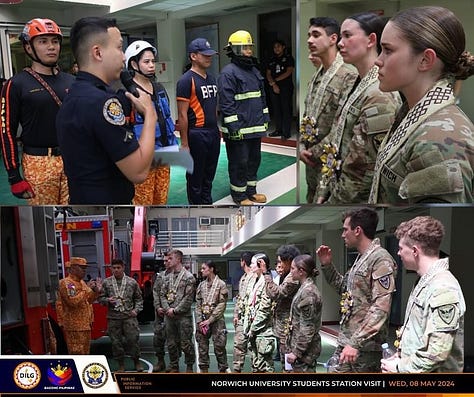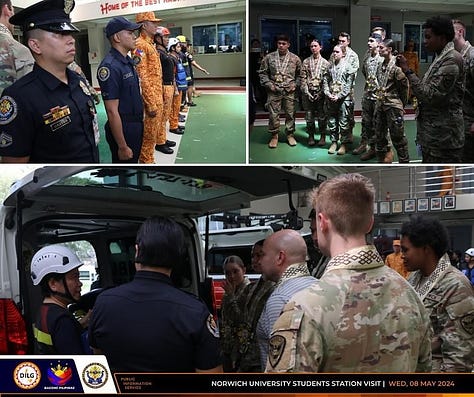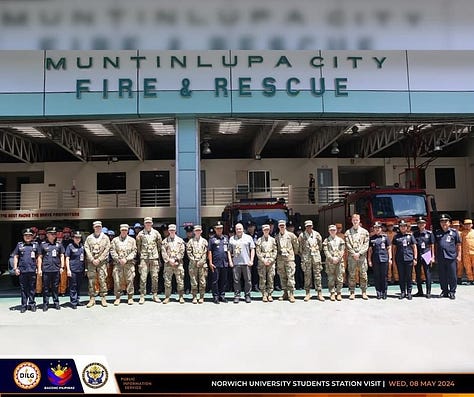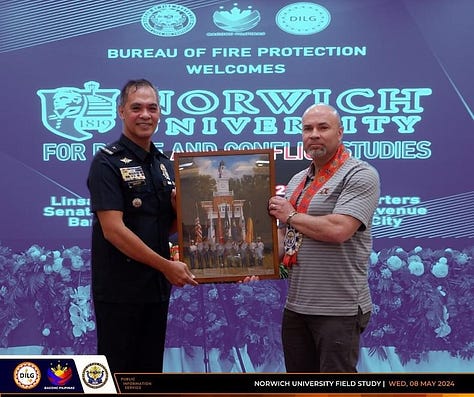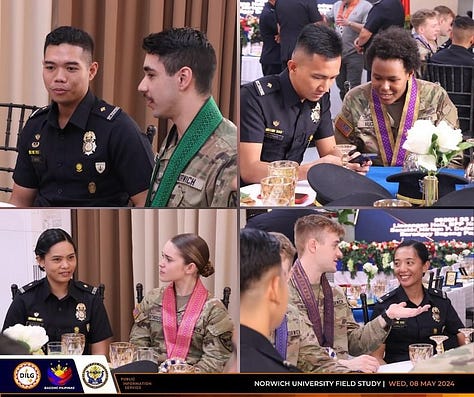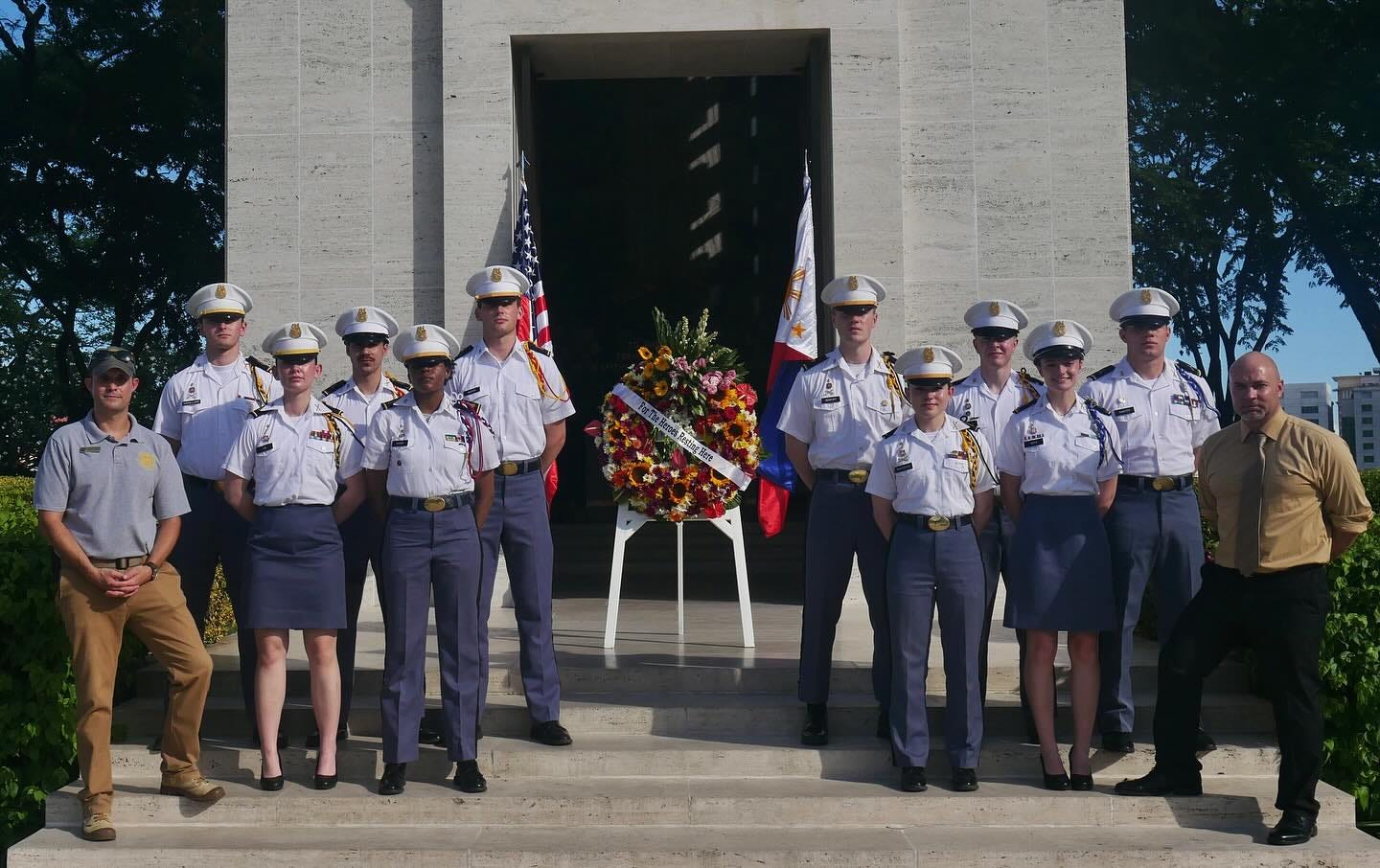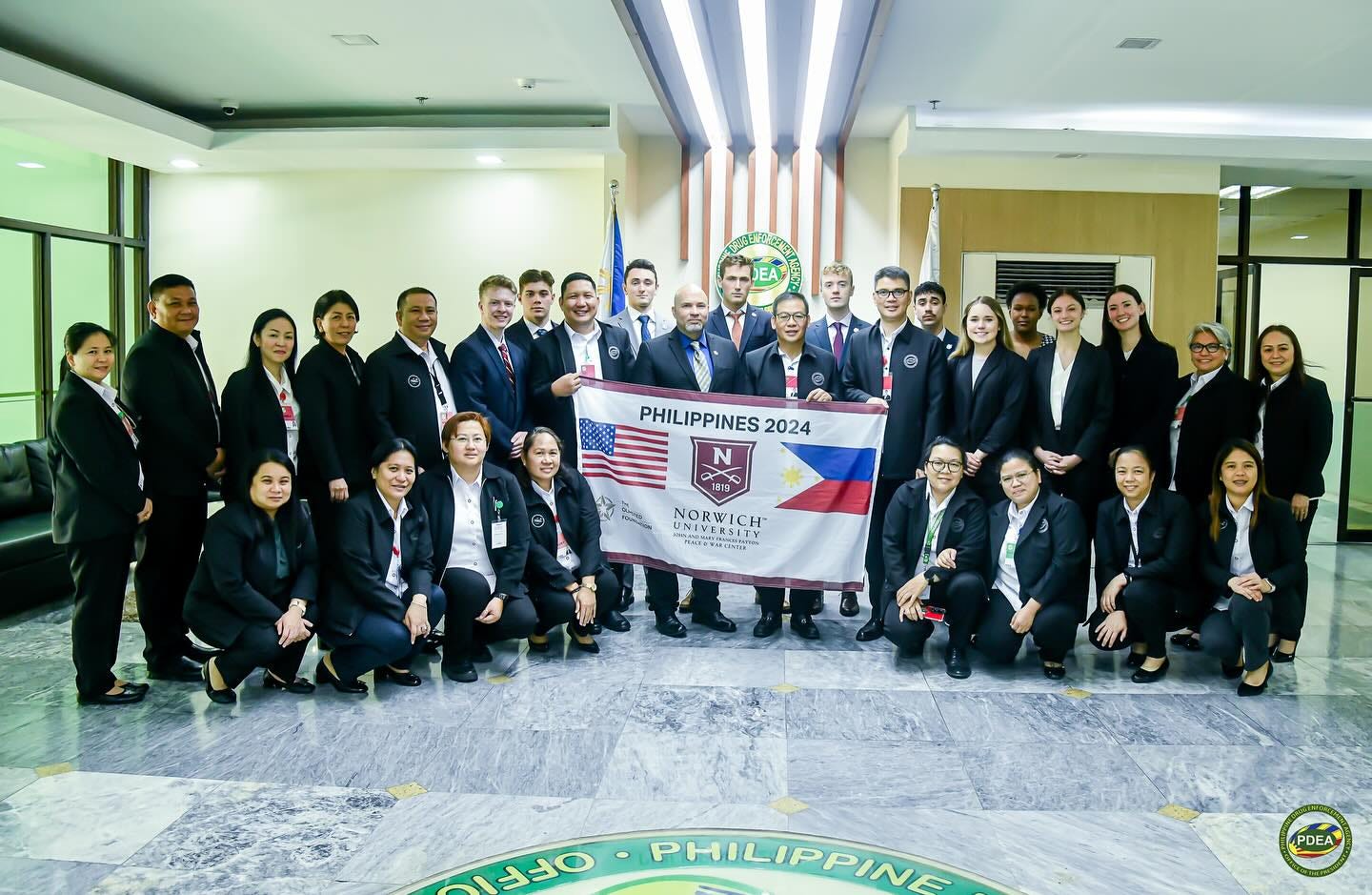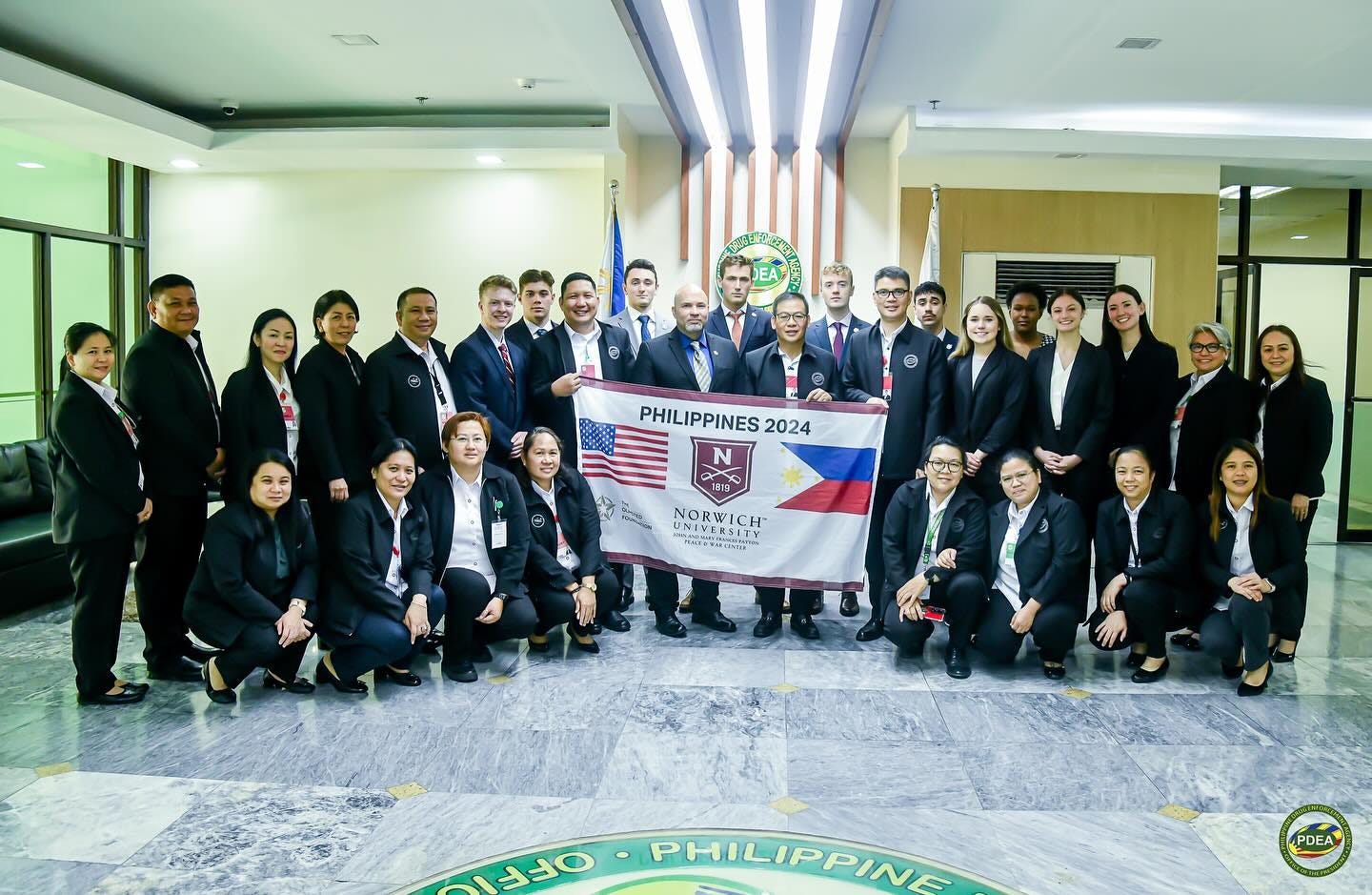Notes from the Field
2024 Olmsted Field Excursion: Philippines - Week One
This week, we recap the first week of the 2024 Olmsted Field Excursion to the Philippines. The field study is funded by the Olmsted Foundation and the Norwich University Peace and War Center. The Olmsted Foundation was founded in 1959 with the objective of providing foreign experience in conflict to junior officers within the United States Military. The team is accompanied by Dr. Travis Morris, the director of the Peace and War Center.
10 Cadets including Grey Cavallaro, Wil Bazant, Analyse Hughes, Sophia Righthouse, Matthew Reinfurt, Maggie Lim, Greyson Merola, John Shaffer, Joshua Fernandez, and Mackenzie Ross have been selected to be apart of this amazing experience.
The team includes 6 Juniors and 4 Sophomores from various majors and ROTC branches. They will all be commissioning as officers in the U.S. armed services upon graduation.
Follow them on our Facebook or Instagram to keep up with their adventures.

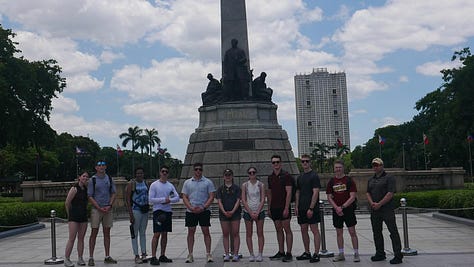

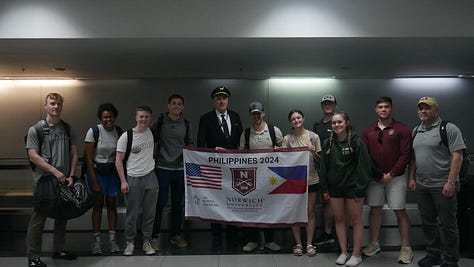
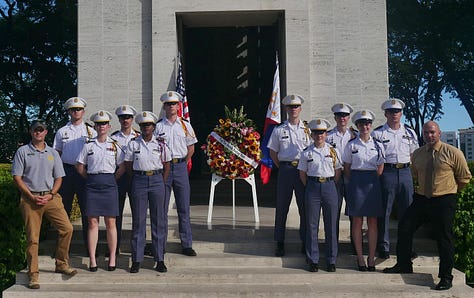
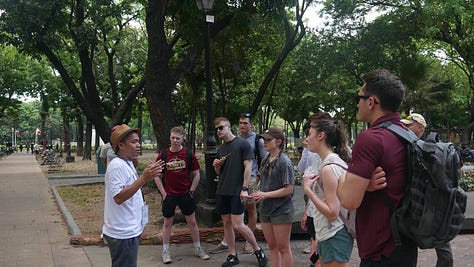
Day 1 started off with a long 14 hour flight from San Francisco to Manila. Our team began our field study with a guided tour of Manila by our amazing local guide Alvin.
Our team visited many religious and historical sites in Manila including Intramuros, Fort Santiago, Rizal Park, Jose Rizal Monument, Manila Cathedral, and San Augustin Church!
We also tried many traditional street foods and a traditional Filipino meal for lunch.
Our team learned a lot about the history of Manila City. Day 1 was truly an amazing experience to learn the culture and background of the Philippines which will be the catalyst to our field study. Thank you once again to our tour guide Alvin!
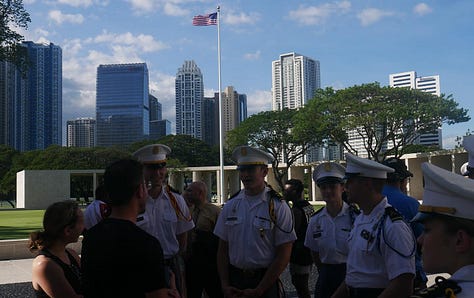


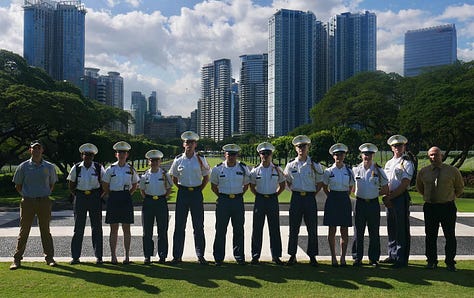

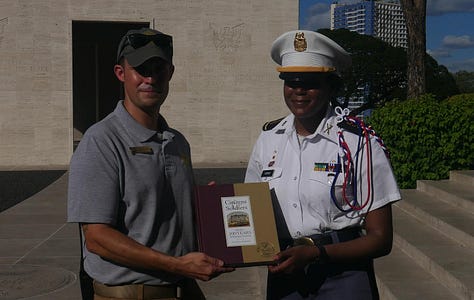
Day 2: Our team visited the Manila American Cemetery to honor the fallen soldiers who sacrificed their lives in the Philippines during WWII.
The Manila American Cemetery is the largest cemetery holding American soldiers outside of the U.S. This World War II Cemetery contains the graves of nearly 17,100 Filipino and American servicemen, and nearly 36,300 names on the Walls of the Missing.
At this special place, our team had a once in a lifetime opportunity to donate a wreath and participate in the wreath ceremony. We also had the amazing opportunity to lower both the American and the Philippines flags. Our team also visited each wall and grave to honor our Norwich Alumni who are resting here.
We had a guided tour of the cemetery by our tour guide, Alfred, and had the chance to meet with the superintendent of the cemetery, Ryan Blum.
We gained more in-depth understanding of the U.S. and Philippines relationship. The Philippines and the United States have had a complex relationship since the Philippines gained its independence from the U.S. in 1946, but American and Filipino soldiers fought side by side during WWII. This cemetery signifies the strong bond between the U.S. and the Philippines and memorializes the hardships both countries went through during WWII.
Wearing our Norwich uniforms, representing every branch of our military, our Olmsted team truly felt the weight of those who came before us. Within busy Metro Manila, this cemetery sits peacefully representing the power and legacy of our American soldiers, sailors, marines and airmen of WWII. Our team could not be more grateful to be honoring them half way across the world.
Not only were we in the presence of all the Americans who fought in the Philippines during WWII, but we were also in the presence of our own alumni, representing Norwich’s over 200 year legacy. Today marks the full circle of the future meeting the past and the realization that we are here today because of the ones who sacrificed their lives for our country.
Our team members will remember this day forever and carry out the legacy of those who came before us.
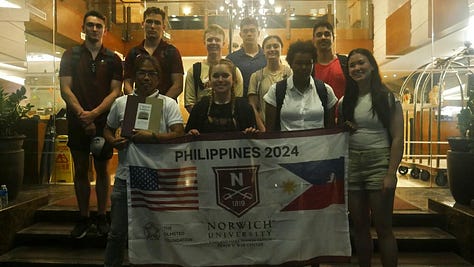
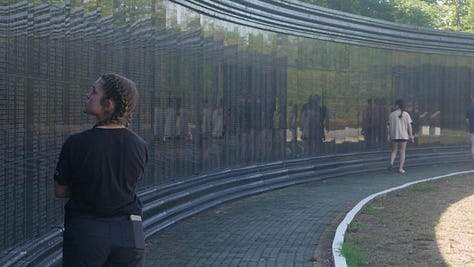

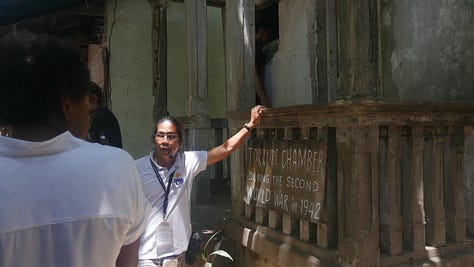
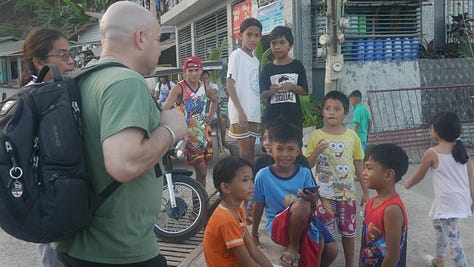
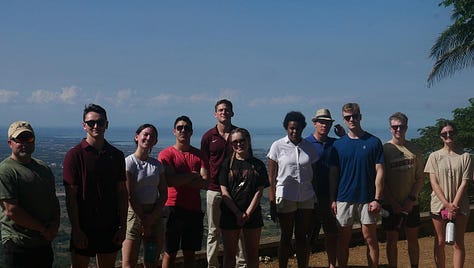
Day 3: Our Olmsted team visited Bataan, Philippines to learn and understand the role this location played in World War II.
Our amazing guide Mar, picked us up around 0500 and we drove for 2 hours to Bataan. We stopped at various memorials such as the Bataan Death March Memorial, the Bataan WWII Museum, and the Mt. Samat National Shrine.
We also stopped to visit various kilometer markers of the Bataan Death March and the boxcar the Japanese soldiers used in WWII.
At the end of the day, we visited Mariveles on the southern coast of Bataan where you can see Corregidor Island. Our team had the chance to talk to the locals in this beautiful fishing village, and some of our team members even played basketball with them!
On day 3 we learned more in-depth about the Battle of Bataan and the Bataan Death March. The Battle of Bataan was one of the most intense phases of Japanese invasion of the Philippines during WWII, and it was the last stand of American and Filipino soldiers before they were overwhelmed by the Japanese forces in WWII.
Today we saw the influence of WWII and how the war has influenced the culture and people of Bataan. We also learned that the Filipino culture is very resilient and communal, which we experienced in person with our amazing guide Mar and the people of Mariveles.
Thank you once again to our guide, Mar, for spending the entire day with our Olmsted team and showing us around Bataan! We will remember this day forever.
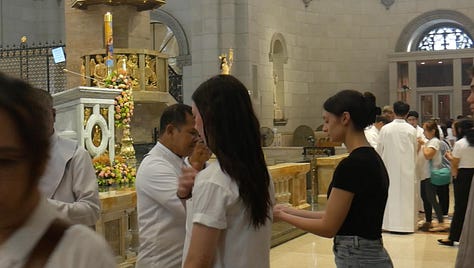

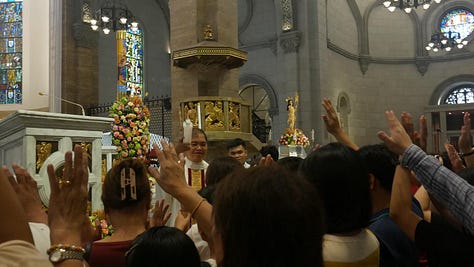
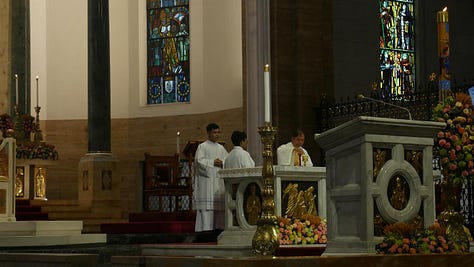
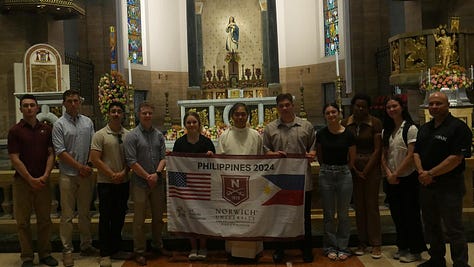
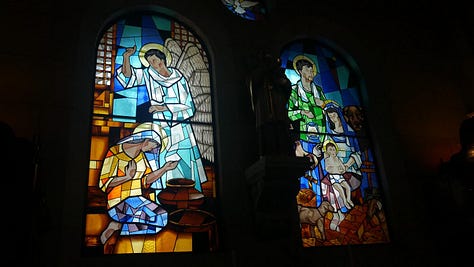
Day 4: Olmsted Team today attended a Mass at Manila Cathedral to learn how religion plays a role in our peace and conflict studies of the Philippines.
The Mass began at 1000 and two of our Catholic team members had the special opportunity to receive communion during the Mass.
After the Mass we met with Father Rolando Ramos Dela Cruz and shared a conversation regarding the role of the Catholic Church plays in the Philippines.
The Mass was narrated in both English and Tagalog which our team found very interesting. During the Mass there was an entire section dedicated to praying for the current climate crisis the Philippines is experiencing which we also found very meaningful.
While attending the Mass, we learned that the Manila Cathedral represents peace and conflict through its adaptation and resilience. The Manila Cathedral also represents the melting pot of Filipino history and culture. Even after centuries of colonization and war, the Cathedral continues to carry out the beautiful conglomerate of the Spanish influenced architecture that is carrying out the Catholic faith in both English and Tagalog to present day.

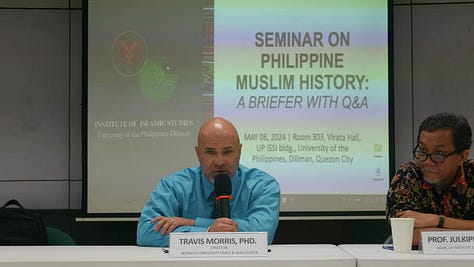
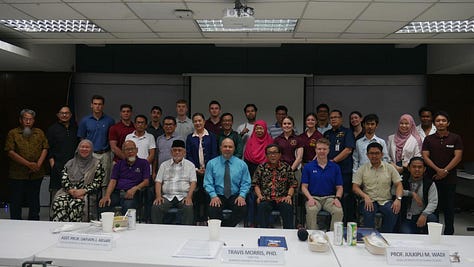
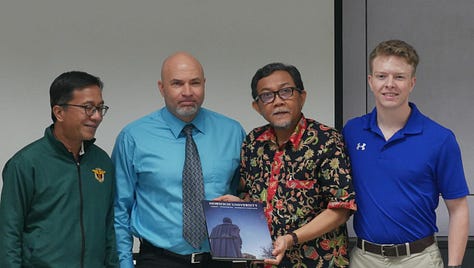

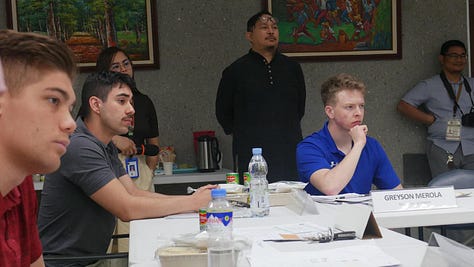
Day 5: Our Olmsted team visited the University of Philippines to attend two separate meetings with the Institute of Islamic Studies and Professor of the History Department, Ricardo Jose.
The first meeting began with a seminar on Philippine Muslim history, practices, and traditions. Following the seminar, we had an open conversation Q&A and our team members asked questions regarding the Filipino Islamic faith. Students asked several questions to understand the meaning and concept of peace and war through the Filipino Muslims lens.
The second meeting was with Professor Jose who is an expert in military history, especially in WWII. He shared a great insight of the Filipino view of WWII. Many of our team members ask about the reconciliation of the war and the effect of generational change on the Filipino remembrance of WWII.
Both meetings gave our team an eye-opening insight of religion and history of the Philippines. Even with different backgrounds and cultures, we came together with the individuals we met to share and learn more about one another.
We ended day 5 with an amazing dinner with our friend, Alfed, who was our guide at the Manila American Cemetery. Alfed served in the Philippine Air Force Special Forces and continues to serve as a reservist for the Air Force today. He shared his combat stories with us, giving us a deeper understanding of the Philippine military.
Day 6 part 1: Our Olmsted team had a very productive day, meeting with the Philippine Drug Enforcement Agency and New Zealand Embassy.
Our first meeting was with the Philippine Drug Enforcement Agency. PDEA gave us a very informative lecture on the drug abuse and trafficking crisis that has been going on in the Philippines.
After we had a very informative Q&A where our students asked about the statistics and international relationships of the PDEA.
After there was an exchange of token from both sides to show appreciation of each other.
PDEA gave their true insight on the drug issues of the Philippines and informed us that the drug crisis is a “borderless crime” and we have to collaborate as a global community to help fight the ongoing war on drugs.
Thank you PDEA for welcoming us with open arms and helping us understand the awareness of the drug issues PDEA is fighting in today’s world.
We hope this meeting becomes the cornerstone for us future leaders to help fight the ongoing global war on drugs and strive for a peaceful drug free future.
Day 7! Olmsted team visited the Bureau of Fire Protection Headquarters and Mantilupa City Fire Department.
We began our day at the BFP headquarters and discussed BFP’s role in ensuring and maintaining a fire safe community across the Philippines. We also learned about the structure of the BFP and how it is managed across the nation.
During our visit with BFP headquarters we also had the special opportunity to meet some recent officer graduates of the National Police Academy who will be working for the BFP.
After, we visited the Mantilupa City Fire Department. During our visit, we explored the static displays, toured the station facilities, and witnessed a live fire simulation.
After we also participated in some karaoke with the Mantilupa Fire Department staff!
Thank you to the strong men and women of BFP for a once in a lifetime experience. This exchange provided our team both educational value and a platform for cultural exchange. This experience will forever hold a special place in our hearts.
Although BFP members and our team has different experiences and understandings, we observed a commonality: a collective honor, commitment, and a noble sense of duty.


